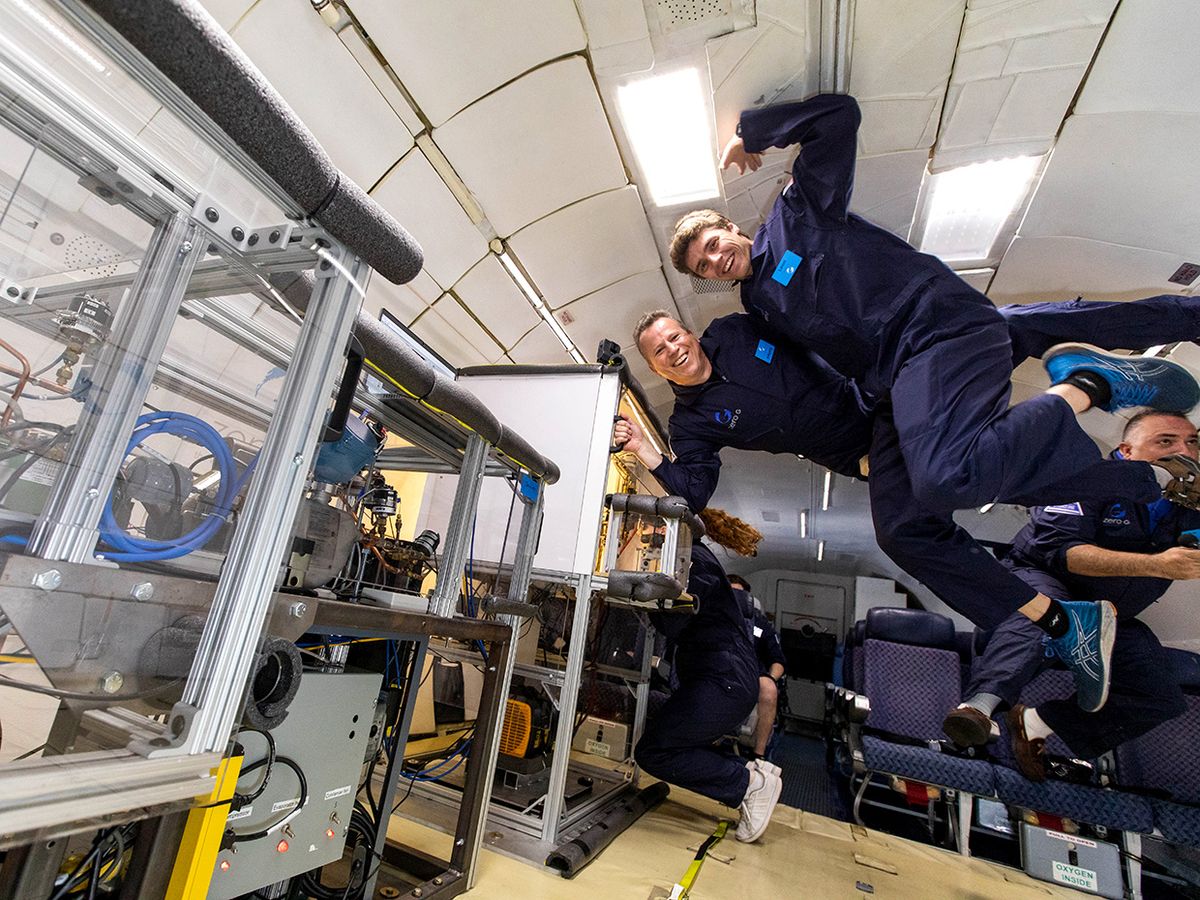How do you pack food for a trip to Mars? This is not a trick question. As astronauts and space scientists gear up for longer missions and spaceflights—just the journey to and from Mars takes about six months—they will need an adequate supply of food, for which they need refrigeration.
The problems: Earthly refrigerators don’t work in zero gravity and existing cooling systems aren’t efficient enough. So for decades, scientists have struggled to build a refrigerator suitable for space.
Now a solution may be nigh. A team of engineers from Purdue University, in collaboration with Whirlpool and the technology company Air Squared, have designed a refrigerator that cools food with a vapor-compression cycle similar to conventional fridges, but without oil, that could work in zero gravity.
In May 2020, they tested the prototype in a microgravity lab, a specially designed plane for parabolic flights that provides a series of 20-second intervals of weightlessness during which scientists make their observations.
On the flight, they tested the fridge’s vulnerability to liquid flooding the compressor and to check if microgravity affects the vapor-compression cycles. While data analysis is still pending, the tests indicated that the prototype does not show a higher likelihood of flooding in microgravity, and works just as well in those conditions. This microwave-sized design would also fit into the International Space Station’s rack system.
When they started working on the project, says Leon Brendel, a Ph.D. student in mechanical engineering at Purdue, and part of the research team, they weren’t sure what to expect. “One problem was easy to identify, and that is the oil lubrication of the compressor,” says Brendel. Conventional compressors, like the ones in fridges and air conditioners on Earth, pick up oil from a sump at the bottom, where it accumulates because of gravity. Without gravity, that lubrication system would not work.
“The thrust of the project [therefore] was to develop an oil-free compressor that is suitable for the refrigeration temperatures we wanted to achieve,” Brendel adds. For this, the team used special oil-free compressors, developed by Air Squared, with proprietary manufacturing techniques and the use of greased bearings to lubricate the wearing components.
The other challenge was the presence of both liquid and vapor the refrigeration cycle. “With gravity they behave very predictably—liquid has a higher density, so it will be at the bottom, and the vapor will be in the form of bubbles or will be on top of the liquid.” Take away gravity, and not only is there nothing to pull the liquid down anymore, the flow patterns of the fluids are extremely difficult to predict, increasing the possibility of liquid flooding.
Even in terrestrial applications, Brendel says, liquid flooding is fairly prevalent, causing damage or complete failure in the compressor. But “because liquid [travels] in one direction [due to gravity], you can build a…liquid trap.” In microgravity, this is not possible. Thus, one of their experiments was dedicated solely to this—checking if liquid reaches the compressor.

“What we did, in simple terms, [is] work on the system until it was orientation independent,” says Brendel. Before testing it on the parabolic flight, the researchers had ensured the prototype worked in different orientations—sideways, upside-down, and so on. Since there is no way to simulate microgravity on the ground, they changed the relative direction of gravity instead.
The Purdue team also worked closely with Michael Ewert, a NASA engineer, who has extensive experience researching and building refrigeration systems for space. The collaboration also resulted in a paper reviewing literature on vapor compression refrigeration in microgravity environments.
There are still corners to iron out, says Brendel. “There are a few situations, particularly when the system is off, that could lead to liquid reaching the compressor. So we want to work on a liquid containment system.”
Another aspect that they did not look into much, but needs to be addressed, is the defrosting of the evaporator. “You [could] just use a big fan to blow the droplets off the evaporator,” Brendel says. “Alternatively, there are special coatings for surfaces, which would basically absorb and transport the water away from the evaporator. Both are options, but we haven't settled on a solution yet.”
Payal Dhar (she/they) is a freelance journalist on science, technology, and society. They write about AI, cybersecurity, surveillance, space, online communities, games, and any shiny new technology that catches their eye. You can find and DM Payal on Twitter (@payaldhar).



